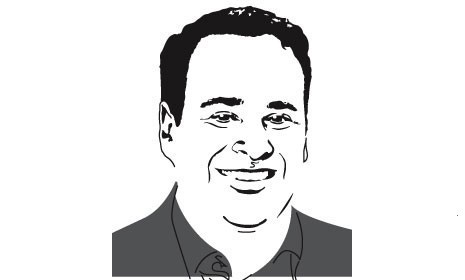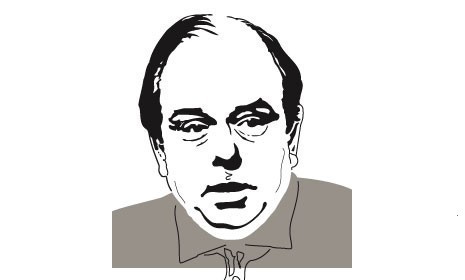Is the economy a victory or a defeat?
Yes, we've averted the worst, but unemployment is at 10 percent. Assessing the economic recovery
In Akira Kurosawa's Seven Samurai, seven (surprise!) samurai led by Kambei, who says he has "never won a battle," defend a village and its farmers against raiding bandits. At the end of the movie the bandits have fled, the villagers are safe and prosperous, and Kambei tells the other two survivors as they look at the graves of their four slain friends: "Again we are defeated. It is the farmers who have won. Not us."
For the past 14 months, the Obama administration has been trying to defend the economy against the forces of depression. Now, the unemployment rate is 10 percent and (we hope) not headed higher, and real GDP looks to be growing at 3 percent per year. Is this victory or defeat?
In June 2007, the S&P Composite sold for an index value of 1,500. A 10-year, 5 percent coupon $1,000 U.S. Treasury bond sold for $990. In March 2009, the S&P Composite U.S. stock index sold for an index value of 800; had there been any newly issued 10-year 5 percent coupon $1,000 U.S. Treasury bonds at that time, they would have sold for $1,170. If we do the bond versus stock math for that 21-month period, we find investors in long Treasurys gained 23 percent in real terms, while investors in diversified equities lost 45 percent in real terms.
The Week
Escape your echo chamber. Get the facts behind the news, plus analysis from multiple perspectives.

Sign up for The Week's Free Newsletters
From our morning news briefing to a weekly Good News Newsletter, get the best of The Week delivered directly to your inbox.
From our morning news briefing to a weekly Good News Newsletter, get the best of The Week delivered directly to your inbox.
Only a small part of the 45 percent loss by equity holders was due to the expectation of a continued recession. When the crisis started, the stock market’s annual dividend yield was 3 percent. At that yield, 3 percent of the long-run value of stocks comes from next year’s dividend and 97 percent from the dividends in subsequent years; 85 percent of the value comes from dividends more than five years in the future; 70 percent (actually 75 percent—compound interest kicks in) of the value of stocks comes from the dividends that are expected to be paid more than a decade down the road.
Given the effects on corporate profits, only 8 percent of the 45 percent fall in warranted S&P Composite value can be attributed to the recession. The other 37 percent—like the 23 percent cumulative real return on long Treasuries—was part of an enormous shift in the risk tolerance of the market. During this unprecedented flight to safety, the prices of all assets perceived as risky—including the stock market—fell, and the prices of those assets perceived as safe—Treasurys—rose.
These large movements in asset prices matter very much to the princes of Wall Street and Canary Wharf, and to those of us with 401(k)s who want someday to retire. But they also matter a great deal to the country at large. Our financial markets are a large-scale, parallel-processing, distributed computational network that tells the real economy what kinds of organizations should be expanded (or shrunk) and what kinds of investments should be made (or avoided). We are fortunate to have financial markets performing this crucial task rather than, say, the investment directorate of the late and unlamented Gosplan Soviet central planning committee.
But even the distributed model has some authoritarian quirks. Over the 21 months from June 2007 to March 2009, the financial markets sent the real economy stronger and stronger signals that all risky investments should be avoided and all risky organizations should be shut down or shrunk. And because employing people to make or do something is inevitably somewhat risky, many of these firms responded to the collapse of risk tolerance by firing employees. As a result, we now have an employment-to-population ratio in the U.S. of 58.2 percent, down from 63.0 percent in June 2007, and an unemployment rate that has risen from 4.6 percent in June 2007 to 10.0 percent.
A free daily email with the biggest news stories of the day – and the best features from TheWeek.com
Since at least 1825—when the canal speculation bubble collapsed in Britain and the Bank of England intervened at the request of a prime minister who did not want rioting and rock-throwing mobs of newly unemployed in the streets—there has been a standard drill for government action when the risk tolerance of financial markets collapses. The problem is that industry and enterprise cannot go forward because finance is unwilling to hold their (inevitably risky) debts on terms that make industry and enterprise profitable. (Finance is unwilling because everybody is trying to sell their risky assets and scramble to move their portfolio into a fixed supply of safe assets.)
The solution is for the government to satisfy this demand by expanding the supply of assets widely regarded as safe in one of two ways: fiscal policy (i.e., by having the government issue a lot of relatively safe government bonds and spend that money hiring people to do something useful); and monetary policy (i.e., by having the central bank buy risky assets and pay for them with the ultimate safe asset: cash).
The problem with fiscal policy is that a fiscal boost to employment and production is not free: Interest must be paid to carry the government debt issued and taxes must be raised to amortize it, and both act as a drag on the economy. In addition, ramping up government spending entails settling for sub-optimal value in return for the rapid injection of stimulus. There is art to the formula, as much as science. If you issue too much debt you can crack the Treasury bond’s status as the safe asset in the economy. As a consequence, you will have not increased but rather reduced the supply of safe assets for financial markets to hold.
The problem with monetary policy is analogous: Creating too much cash can crack confidence in the central bank’s commitment to price stability, making cash an unsafe asset. There is only so much the central bank can do to increase the supply of safe assets by buying up the relatively low-risk volume of Treasury bonds. If the central bank buys up private assets for cash—well, then we have transferred a great deal of economic control over the firms in which the Federal Reserve has invested to the Fed’s staff, which is better than turning it over to the investment directorate of Gosplan but still not ideal. In the process, the central bank boosts the profits of many of the financiers who created the problem in the first place, thereby creating the incentive to make the next speculative wave even worse.
The alternative, of course, is to do nothing and wait for the system to cure itself. We tried that once and only once, back when Herbert Hoover followed the advice of his treasury secretary, Andrew Mellon, whom he later claimed had said that “even a panic is not altogether a bad thing”: the result was the Great Depression.
It first became clear in June 2007 that lots of mortgage-backed securities were a lot riskier than the rating agencies had deceived themselves into believing, and that lots of banks that were supposed to be following a regime of originate-and-distribute were instead following a program of originate-and-hold. Because the “hold” in this case referred to enormously risky securities being held in the banks’ portfolios, the banks themselves were much riskier institutions than almost anyone had imagined.
Since then, the assembled technocrats of governments and central banks (with some “assistance” from elected politicians) have been trying to carry out the right kind of fiscal policy (but not too much) to cushion the fall in employment without leaving the economy staggering under the burden of an inordinate government debt load, and to carry out the right kind of monetary policy (but not too much) to cushion the fall in employment without baking another round of destructive 1970s-era inflation into the cake. This task is difficult and fraught: it is no accident that, to my eye at least, both Ben Bernanke and Tim Geithner look a decade older today than they looked at the start of 2007. I personally think that they are underestimating the benefits and overestimating the risks of doing more in the way of fiscal and monetary policy. But I also know that there is at best one chance in 10 that I would be a better treasury secretary than Tim Geithner and a better Federal Reserve chairman than Ben Bernanke.
I’m betting that the risk tolerance of financial markets will recover, but will do so slowly and gradually. Imagine two years of 3 percent annual world growth and only very slow declines in unemployment before the economic recovery-to-be hits its stride. Should we regard this as a victory?
I would say yes. Why? Because the magnitude of the financial shocks was greater than that initiating the Great Depression, yet the damage to the real economy is, proportionally, less than one-third as great. That is a victory.
Defeat came earlier—in the form of bankers who were so eager to keep dancing while the music played that they had no clue that their subordinates had shifted to an originate-and-hold rather than an originate-and-distribute model for risky securities, or that the system of incentives they had constructed induced their subordinates not to hold an appropriate fraction of capital in safe assets but rather in assets merely rated safe.
Given the severity of that earlier defeat, I think that we are, all in all, rather lucky.
Brad DeLong is a professor in the Department of Economics at U.C. Berkeley; chair of its Political Economy major; a research associate at the National Bureau of Economic Research; and from 1993 to 1995 he worked for the U.S. Treasury as a deputy assistant secretary for economic policy. He has written on, among other topics, the evolution and functioning of the U.S. and other nations' stock markets, the course and determinants of long-run economic growth, the making of economic policy, the changing nature of the American business cycle, and the history of economic thought.
-
 3 reasons to feel good about the economy
3 reasons to feel good about the economyfeature The unemployment rate remains stubbornly high, and D.C. is mired in a debt-ceiling stalemate. But it's not all bad
-
 It's still all about the economy
It's still all about the economyfeature Bin Laden's death swamped an anemic economic report. That's bad news for America — and for Obama's chances of re-election
-
 The economy trumps Trump
The economy trumps Trumpfeature Obama has deflected the birthers. The real danger for the president now is the GOP's political ploy to dead-end the economy
-
Politics is undermining our economy
feature We could reduce unemployment — if only Washington wanted to
-
 Britain proves the folly of GOP economics
Britain proves the folly of GOP economicsfeature First slash spending. Then watch the economy contract
-
 We need a dose of inflation
We need a dose of inflationfeature William Jennings Bryan was a crank, but he understood in the 1890s that deflation is more dangerous than cheap money. It still is
-
 David Brooks' neo-Hooverite plea
David Brooks' neo-Hooverite pleafeature The conservative N.Y. Times columnist is politely asking Obama to ignore basic economics, ignore the bond markets, and ignore Nobel laureate Paul Krugman — and to please steer the economy into a ditch
-
 Afghanistan could decide this presidency
Afghanistan could decide this presidencyfeature Despite the false hopes of Republicans, Obama will prevail on health care and preside over a growing economy. The fateful test is Afghanistan.


